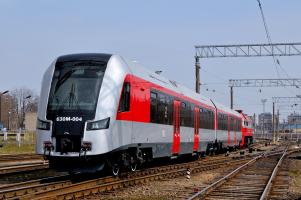Lithuania’s vital rail transport corridors
Lietuvos Gelezinkeliai (LG) is the national, state-owned railway company of Lithuania. It operates all the railway lines in the country, and the bank has been supporting its top-down modernisation programme for the network since 1996. Thus far there have been three operations: in the first, we lent EUR 40m to LG for a comprehensive upgrade of the railway infrastructure, while the second, towards which the EIB contributed EUR 43m, concerned the locomotives themselves.
A third loan, signed in June 2013, is valued at EUR 50m and will allow LG to buy 590 new freight wagons and nine new passenger trains. As Stasys Dailydka, Director General of LG states, “we must constantly renew our fleet because failing to do so will leave us with few good-to-use wagons five to six years from now.”
There are various benefits to the EIB supported programmes. LG was able to lay down 310km of new track along Trans-European Corridors, notably between the Baltic Sea port of Klaipeda and the border with Belarus, to the East. It also links the major Lithuanian cities, Vilnius and Kaunas, with Kaliningrad, the Russian port enclave also serving the Baltic. This provides a boost to pan-European connectivity.
The new rolling stock acquired in the second operation comprises 34 modern diesel locomotives. These were brought into service over the latter half of the last decade, and have replaced 64 Soviet-era units which had been in use since the 1970s. The new locomotives improve efficiency in freight and passenger transport, and also cut dangerous emissions as well as maintenance costs. Safety and transport speed have also improved. Passenger numbers have been creeping upwards, to reach 4.8 million in 2012, and the nine new passenger trains can only help this trend.
The 590 new freight wagons will mainly be used for cross border railway traffic between Lithuania and its neighbouring countries to the East, and will be quieter and lighter than the outgoing equipment. Says Stasys Dailydka, “we are reacting to requests from our clients as well as growing demand for security, and we seek to stay in competition.” In 2012, a total of 49.5 million tonnes of freight was carried on Lithuania’s rail network.
These economic benefits are substantial and vital to ensure rail is competitive with road transport in Lithuania, as well as assisting the progress of the nation’s economy and supporting EIB lending priorities: the modernisation of the individual corridors of the Trans-European transport network, and reducing the environmental impact of these vital arteries of development.

